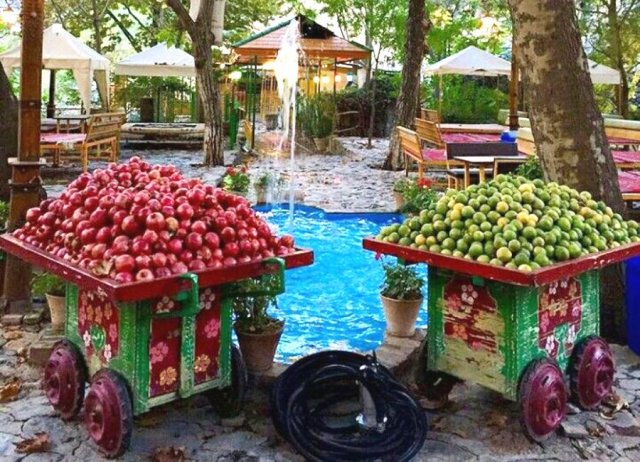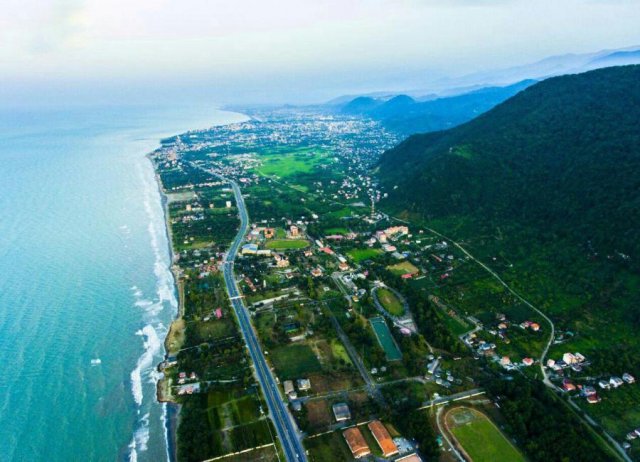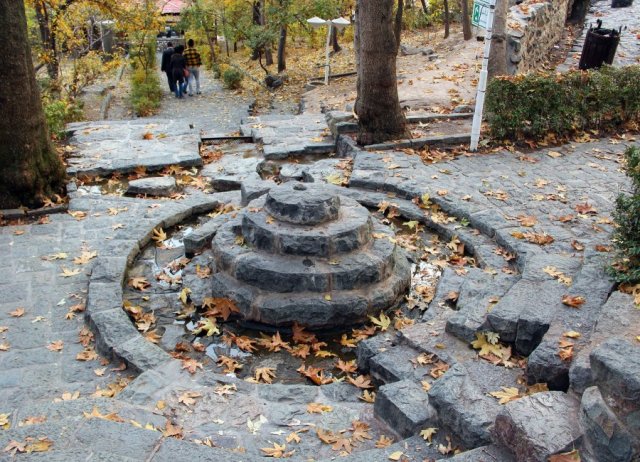Saadabad Complex
Sprawling across the foothills of Darband, this estate was a summer home to royals since the Qajar dynasty, although it was the Pahlavis who expanded it to the site you see today. Covering 110 hectares and com-prising 18 separate buildings, it will take you a good three hours to see everything. For a glimpse into the luxurious life of the shahs, don’t miss the extravagant 54-room White Palace, built in the 1930s. The more classical-looking Green Palace dates from the end of the Qajar era.
All tickets must be bought at either the front gate near Tajrish or at the northern entrance from Darband; entering from the north makes sense if you’ve previously spent the morning and had lunch in Dar-band. Ask at either ticket office for the useful English map.
There’s a minibus that shut-tles regularly from the front gate, pausing at the White Palace on the way up to the Green Palace, then back again.
For refreshments, there are two pleasant but unexceptional cafes inside the grounds.
To get to the front gate, walk or take a taxi 1.5km northwest from Tajrish Sq, beginning on Ja’fari St and turning left and right (ask anyone for ‘Musee Sa’d Abad’). Or go to Darband and enter from there.
The following are the key parts of the complex; the grounds are also a pleasant place for strolling.
The museums:
- White Palace
Built in the 1930s, and one of the highlights of the Sa’d Abad Mu-seum Complex, most of what you see in this 5000-sq-metre, 54-room palace dates from Mohammad Reza Shah’s reign (1942–79). Little has changed since the revolution – the palace is filled with a hodge-podge of extravagant furnishings, paintings, a tiger pelt and immense made-to-measure car-pets. In the upstairs Ceremony Hall is a 143-sq-metre carpet that is said to be one of the largest ever woven in Iran.
The nearby Dining Hall contains a sim-ilar carpet, and it is here that the shah, convinced the palace was bugged, dragged a table into the middle of the room and in-sisted both he and the American general he was entertaining climb on top before they spoke.
The two bronze boots outside are all that remain of a giant statue of Reza Shah – he got the chop after the revolution.
Don’t miss the trippy stainless-steel staircases at the back of the White Palace’s ground floor, which spiral down to the Na-tions Art Museum in the basement. This eclectic collection of works was gathered by Farah Diba, the last Shah’s wife, and includes works from across the Islamic world.
- Green Palace
A hike up the northwest end of the Sa’d Abad Mu-seum Complex, the classical-looking Green Palace was built at the end of the Qajar era when it was known as the Shahvand Palace. Extensively remodelled by the Pahlavis, the building’s current name comes from the mossy green stone that covers the exterior. The design is over-the-top opulent, with wall-to-wall mirrors in the appropriately named Mirror Hall and the bedroom. Be sure to wander around the building to take in the view from the back.
- Fine Art Museum
Near the front gate of the Sa’d Abad Museum Complex, this museum exhibits many excellent paintings, including a dazzling full-sized portrait of Fathi-Ali Shah in full regalia by the early 19th-century artist Meh Ali Isfehani. There are also European works from the 18th to 20th centuries, including paintings by Salvador Dalí.
- Royal Costume Museum
Located at the northern end of the Sa’d Abad Museum Complex and occupying the 1939 vintage Shams Palace, once the Shah’s sister’s residences, this museum houses an exquisite range of clothing, including colourful tribal costumes and bejewelled evening gowns from the 1950s and ’60s created by top European couturiers. Look out for the the Yves Saint Laurent–designed wedding dress of Farah Diba. The building itself combines Iranian and European architectural styles.
Points Of Interest
This village, at 1700m elevation and just north of the no-torious Evin Prison, is one of Tehran’s most pleasant urban escapes
At 370,000 sq km the Caspian (Darya-ye Khazar) is five times the size of Lake Superior.That makes it by far the world’s largest lake.
This popular in town escape stretches ever more steeply up the mountainside at Tehran’s northern edge



